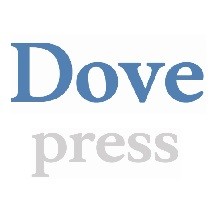
آتروفی عضلانی نخاعی قدامی
چکیده
آتروفی عضلانی نخاعی (SMA) یک بیماری ارثی عصبی عضلانی با میزان کم نورونهای حرکتی است و بدلیل نقص پروتئین نورون حرکتی بقا (SMN) ایجاد میشود که عمدتا با ضعف پیشرونده و آتروفی ماهیچههای قدامی در ارتباط است. هر چند آتروفی عضلانی نخاعی شامل طیف وسیعی از حدت بیماری و نرخ بالای مرگ و میر و ناخوشی است، اما پیشرفتهای اخیر در مراقبتهای حمایتی بین رشتهای کیفیت زندگی و امید به زندگی را در مبتلایان افزایش داده است. تحقیقات فعال برای گزینههای درمانی احتمالی نیز از زمان کشف ژن در سال 1995 ممکن شدهاند. با این وجود، در حال حاضر درمان علنی برای بیماری وجود ندارد و مدیریت درمانی آتروفی عضلانی نخاعی همچنان بصورت چالش برانگیز مانده است؛ بقای طولانی مدت، مخصوصا مشکلات ارتوپدی، تنفسی و تغذیهای در حال افزایش اند. این مقالهی مروری بر مدیریت ارتوپدی بیماری با بحث در مورد جنبههای کلیدی تمرکز میکند که عبارتند از اسکولیوز، انقباضهای عضلانی، اختلالات مفصل ران، شکستگیها، ابزارهای فنی و رویکردی مقایسهای درمان محافظه کارانه و جراحی نیز مورد بررسی قرار خواهد گرفت. همچنین تاکید ما بر عوارض جانبی از جمله درگیری تنفسی، مراقبت بعد از عمل و بیهوشی، مشکلات تغذیه و توانبخشی است. دورهی بیماری آتروفی عضلانی نخاعی را میتوان تا حد زیادی با درمان مناسب با روشهای ارتوپدی در یک شیوهی درمانی بین رشتهای بهبود بخشید.
مقدمه
آتروفی عضلانی نخاعی (SMA) یک بیماری ارثی عصبی عضلانی است. این بیماری معمولا با جهش یا حذف شدگی ارثی اتوزومی مغلوب در ژن نورونهای حرکتی بقا (بنام SMN، SMN1) بر روی کروموزوم 5q ایجاد میشود که پروتئین نورون حرکتی بقا (SMN) را کد میکند. نقص ژن منجر به تخریب سلولهای شاخ قدامی نخاع و گاها نورونهای حرکتی اعصاب جمجمهای V تا XII میشود. آتروفی عضلانی نخاعی با بروز تقریبی 15000:1 تا 20000:1 و شیوع 80:1 در میان ناقلین ژن رخ میدهد. با وجود تحقیقات فعال و روشهای چندگانه برای گزینههای درمانی جدید، در حال حاضر یک درمان مسبب برای آتروفی عضلانی نخاعی در دسترس نیست.
Abstract
Spinal muscular atrophy (SMA) is a hereditary neuromuscular disease of lower motor neurons that is caused by a defective “survival motor neuron” (SMN) protein that is mainly associated with proximal progressive muscle weakness and atrophy. Although SMA involves a wide range of disease severity and a high mortality and morbidity rate, recent advances in multidisciplinary supportive care have enhanced quality of life and life expectancy. Active research for possible treatment options has become possible since the disease-causing gene defect was identified in 1995. Nevertheless, a causal therapy is not available at present, and therapeutic management of SMA remains challenging; the prolonged survival is increasing, especially orthopedic, respiratory and nutritive problems. This review focuses on orthopedic management of the disease, with discussion of key aspects that include scoliosis, muscular contractures, hip joint disorders, fractures, technical devices, and a comparative approach of conservative and surgical treatment. Also emphasized are associated complications including respiratory involvement, perioperative care and anesthesia, nutrition problems, and rehabilitation. The SMA disease course can be greatly improved with adequate therapy with established orthopedic procedures in a multidisciplinary therapeutic approach.
Introduction
Spinal musclular atrophy (SMA) is a hereditary neuromuscular disease. It is usually caused by autosomal-recessive inherited mutation or deletion in the survival motor neuron (telSMN; SMN1) gene on chromosome 5q, which codes for the survival motor neuron (SMN) protein.1 The gene defect leads to degeneration of the anterior horn cells of the spinal cord and occasionally of the motor neurons of the cranial nerves V to XII. SMA occurs with an approximate incidence of 1:15,000 to 1:20,000, with a prevalence of 1:80 among carriers of the gene.2 Despite active research and multiple approaches for new treatment options, a causative therapy for SMA is not available at present.
چکیده
مقدمه
طبقهبندی
انقباضات
اندام فوقانی
اندام تحتانی
درگیری مفصل ران
شکستگیها
اسکولیوز
درگیری تنفسی
مشکلات تغذیهای
توانبخشی
ارتزها و دستگاههای فنی
مدیریت بعد از عمل
نتیجهگیری
Abstract
Introduction
Classification
Contractures
Upper extremities
Lower extremities
Hip joint involvement
Fractures
Scoliosis
Respiratory involvement
Nutrition problems
Rehabilitation
Orthoses and technical devices
Perioperative management
Conclusion
- ترجمه فارسی مقاله با فرمت ورد (word) با قابلیت ویرایش، بدون آرم سایت ای ترجمه
- ترجمه فارسی مقاله با فرمت pdf، بدون آرم سایت ای ترجمه
